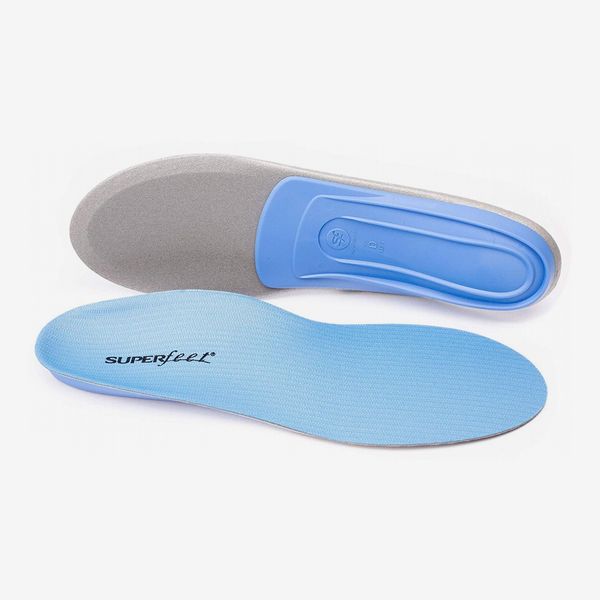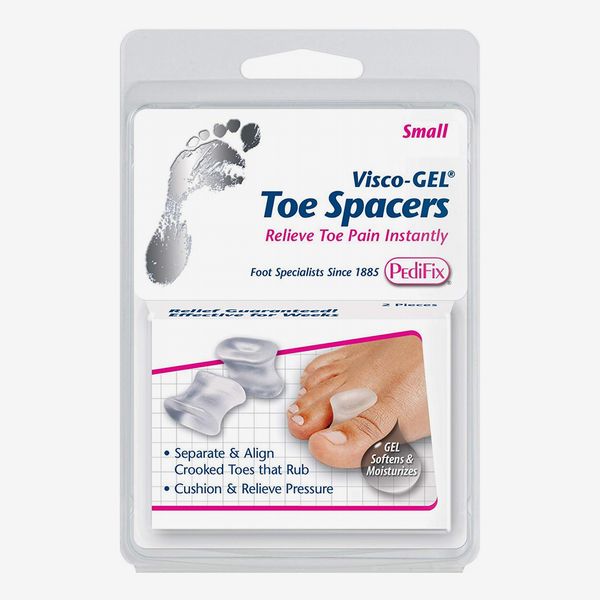
While we might all be curious about the best plunger or probiotic tampon or cold-sore remedy, it can be difficult to discuss these more personal items. That’s why we’re tackling Things We Don’t Talk About, a series in which we track down the best hygiene-, sex-, and bodily function–related things we all need but might be too embarrassed to ask about. In this installment, we consult experts on the best treatments for bunions.
For the roughly 30 percent of American adults who suffer from bunions, the painful bump on your big toe is likely to be a progressive problem that gets worse over time. According to Dr. Priya Parthasarathy, a bunion specialist and spokeswoman for the American Podiatric Medical Association, “A bunion is an enlargement of the joint at the base of the big toe — the metatarsophalangeal (MP) joint — that forms when the bone or tissue at the big toe joint moves out of place.” As the movement forces the toe to bend toward the others, an often painful, prominent bump is formed. Predisposition to bunions is typically genetic, but can also be caused by congenital deformities, flat feet and other poor foot mechanics, ill-fitting shoes, and inflammatory conditions, explains Dr. Miguel Cunha, founder of Gotham Footcare.
There are many over-the-counter products and at-home treatments designed to slow the progression of the condition and alleviate the discomfort of the symptoms, but bunions ultimately cannot be “reversed or corrected without surgery,” says Dr. Joseph Alencherry, who stresses it’s important to see a podiatrist — especially if you start to feel a lot of pain. If you’re cleared to treat your bunions yourself, the seven products below, selected by nine podiatrists, can help.
Every doctor we spoke with recommended investing in a pair of orthotic insoles as the first line of defense in slowing the progression of bunions. “By wearing insoles, you prevent the arch from flattening out, which causes the bunion to grow in size,” explains bunion and hammertoe corrective foot surgery specialist Dr. Sophia Solomon. Ideally, our experts suggest seeing a doctor for custom-made insoles designed to your specific anatomy. But if seeing a specialist isn’t an option, Superfeet insoles come highly praised by six doctors we spoke to as the best over-the-counter option.
An even less expensive set are these orthotic insoles from Powerstep, which come recommended by five of the doctors. Dr. Jacqueline Prevete says they provide adequate support to the arch and may also “alleviate some overpronation,” which makes bunions worse. In conjunction with orthotics, “wearing sneakers and shoes with a wide toe box is helpful,” says Dr. Rebecca Pruthi of Foot Care of Manhattan. “Getting shoes stretched and wearing soft, natural flexible materials” will also reduce added inflammation of the toe joint caused by friction, she says.
Dr. Krista Archer routinely recommends YogaToes toe stretchers to her patients with bunions as a “super simple” way to prevent them from worsening. She suggests wearing them for 15 minutes a day to start, and then eventually working up to an hour. And although YogaToes have not been shown to reverse the deformity, they do “give some relief to aching bunions by stretching out the tendons surrounding the big toe,” adds Soloman, who also tells her patients to do daily calf stretches to prevent bunion formation. And if you need any more endorsements: Strategist writers Lauren Levy and Liza Corsillo also swear by YogaToes, with Levy writing, “they’re comfortable enough to throw on as you relax on the couch, read a book, kick your feet up out of the bath (or in it; they’re waterproof), maybe even as you eat dinner.”
Podiatrist Hillary Brenner suggests soaking your bunion-plagued feet in Epsom salt when they’re causing discomfort. The salt’s magnesium and sulfate are known anti-inflammatory agents, and can soothe achy joints while also easing muscle pain. Dr. Amnon Barnea, owner of Walk NYC Podiatry, also likes Epsom salt. He says to fill a bucket or tub with lukewarm water until your feet are covered, add “about half a cup of Epsom salt, and then soak for about 20 to 30 minutes.”
“Wearing a bunion guard is a great option for those who have smaller deformities and just need some relief from the friction of the bunion bump against a shoe,” says Solomon. While there are plenty of cheap options lining the pharmacy aisle, PediFix’s Visco Gel Bunion Guard came highly recommended by our experts because of its comfortable, flexible material and slim design that can slip inside practically any shoe.
“These are designed to minimize friction between the deviated big toe and the second toe, and to restore a better alignment in the joint of the big toe,” Barnea says of PediFix’s toe spacers. “By restoring a straighter alignment of the big toe, there is less tension in the joint, which can help alleviate some of the pain.” Parthasarathy agrees, calling the Visco-Gel Toe Spacers a “favorite.”
For a remedy you can do in your sleep (literally), four of our experts — Alencherry, Prevete, Parthasarathy, and Cunha — say that wearing a bunion splint at night can stretch out the tightened ligaments and provide relief during the day. “I tell my patients that you will either love these products or hate them, but it is definitely worth a try,” says Parthasarathy.
The Strategist is designed to surface the most useful, expert recommendations for things to buy across the vast e-commerce landscape. Some of our latest conquests include the best acne treatments, rolling luggage, pillows for side sleepers, natural anxiety remedies, and bath towels. We update links when possible, but note that deals can expire and all prices are subject to change.













